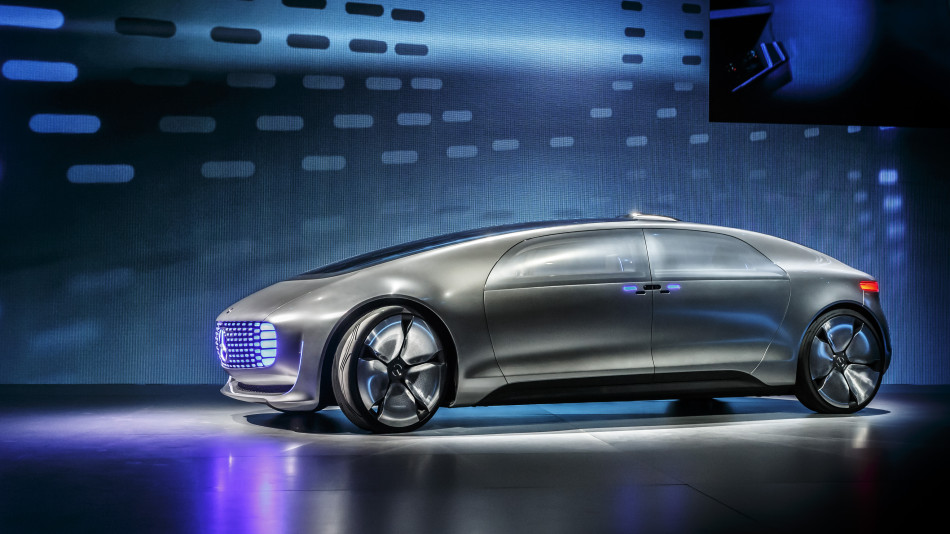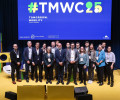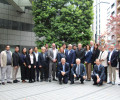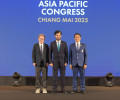From AUTO #10: A future driven by technology

In January 2007, not long before Apple launched the iPhone, Ford debuted an in-car technology that enabled hands-free phone calls, paired with MP3 players and offering SMS and GPS functionality. Called Sync, the new technology was launched at the North American International Auto Show, the biggest motor show in the United States.
This was to be expected. More surprising, however, was Sync’s near-simultaneous appearance at the Consumer Electronics Show (CES) in Las Vegas. It was a bold, unusual strategy for a car maker, but Ford wanted to position itself as a technological innovator, and CES gave it access to a younger, more tech-savvy audience that had been falling out of love with the car.
The manufacturer’s strategy proved prescient. As smartphone technology has exponentially progressed over the intervening years, so consumers increasingly expect their vehicles to become an extension of it. Consultancy firm Accenture surveyed 14,000 drivers in Europe, Asia and North America, and found in-car technology to be the primary consideration driving purchase decisions for 39 per cent of all buyers, compared with 14 per cent for whom a car’s performance was key.
Manufacturers have raced to respond to demand, including Bluetooth audio streaming, multiple auxiliary inputs, WiFi hot-spots, voice recognition, in-car internet and an ever-increasing array of gadgets.
And the trend shows no sign of abating: another consultancy firm, IHS, predicts that internet-enabled cars will almost quadruple from today’s 36 million to 152 million in just five years.
And the showcase venue for all of this new technology is CES. At this year’s event, Ford’s display stand was two storeys tall. CEO Mark Fields gave the show’s keynote speech, and the Sync 3 infotainment system debuted.
A record 10 car manufacturers exhibited to CES’s 140,000 visitors at the 2015 show, and floor space dedicated to automotive exhibitors has doubled to 165,000 square feet in the last five years. What’s more, the auto makers drew in electronics companies that specialise in developing automotive hardware and software – a $11.3 billion business according to CES.
Only a few years ago, automotive companies were a novelty act at CES; now they are leading the agenda. As Forbes magazine reported, ‘Car Tech Was The Only True Source Of Innovation At CES 2015’.
But the boundaries between auto makers and technology companies are increasingly blurring. Manufacturers are not only offering more advanced systems of their own but are increasingly inviting third parties into their space in collaborative projects.
The logical endgame is Apple’s CarPlay system, which Apple dubs ‘the best iPhone experience on four wheels’. Compatible with iPhone 5 models onwards, CarPlay effectively takes over the car’s infotainment system in its entirety once an iPhone is connected.
Android Auto debuted a few months after CarPlay in 2014, and offers similar functionality for Android smartphones. Both systems have been widely adopted by the car industry – 31 car brands for CarPlay, 28 for Android Auto – but the capability must be built-in by the car manufacturer at source.
These collaborations, however, raise crucial questions regarding both brand identity and the extent to which control is handed over to a third party. In effect, the car manufacturers’ hand has been forced by the technology giants: they’d prefer to retain the familiar identity evolved by in-house infotainment systems, but are all too aware that offering CarPlay and Android Auto might make the difference between a consumer buying its car or one of its rival’s.
“We want to collaborate and satisfy that desire of the customer,” explains Fields, “but at the same time not give up control of the vehicle, things like the climate control and mission-critical things like acceleration and braking. The safety of our customers is the most critical thing.”
Mercedes was one of the first companies to offer CarPlay integration, and its CEO Dieter Zetsche echoed Fields’s sentiments. “When we talk about high safety with Mercedes, it does not apply specifically for protection from accidents, but this means safety of personal data as well,” said Zetsche recently. “To be able to provide that, we have to keep control, and we can’t do that when it is collected by Google.”
Electronic content is continuing to proliferate within cars, and not solely for the purposes of entertainment. Electrically assisted – rather than hydraulically assisted – power steering removes the need for an engine-driven power-steering belt, saving fuel and reducing harmful emissions. But it has also enabled hands-free parking and lane-keeping functions that automatically nudge a driver back into their lane should they start to drift out of it. As these systems become increasingly integrated, so the capability to produce fully autonomous cars becomes feasible.
In fact, autonomous vehicle programmes are already well under way: Mercedes and at least six other manufacturers are currently testing advanced prototypes; an autonomous Audi drove 500 miles from Palo Alto in Silicon Valley to Las Vegas for the CES show; and BMW displayed its self-parking i3 electric car, emphasising the extra productivity that could be unlocked from employees freed from performing this mundane task in over-crowded urban environments.
The autonomous car will be big business but ultimately it may not be the traditional manufacturers who reap that rich reward, as once again the tech giants seek to invade that space.
Google has clocked up around a million miles of autonomous vehicle testing on California roads in modified Lexus, Toyota and Audi cars. However, it began evaluating a car of its own design on public roads in early 2015. Google would out-source production and the first examples could be on sale in less than 10 years.
Reports suggest Apple, which ended 2014 with $178bn in cash and marketable securities, is also working on an autonomous car. What Apple is planning is far from clear at this early stage, but Google is clearly creating an anti-car, a transportation device that brings mobility to people who may not have the inclination to learn to drive or the physical ability to turn a steering wheel and press pedals. It also offers a viable alternative to the millions of motorists who see cars as white goods and driving as a chore. As such, the implications for the car industry are quite profound.
You can read the full feature in AUTO magazine issue 10 available here

 Facebook
Facebook Twitter
Twitter






